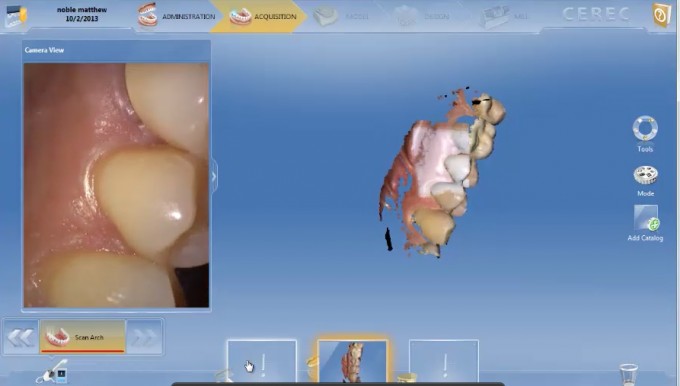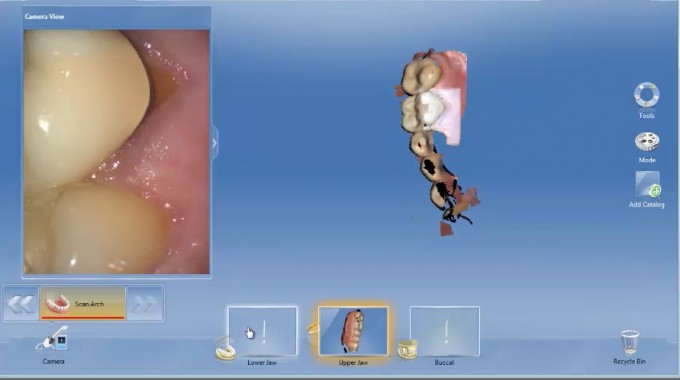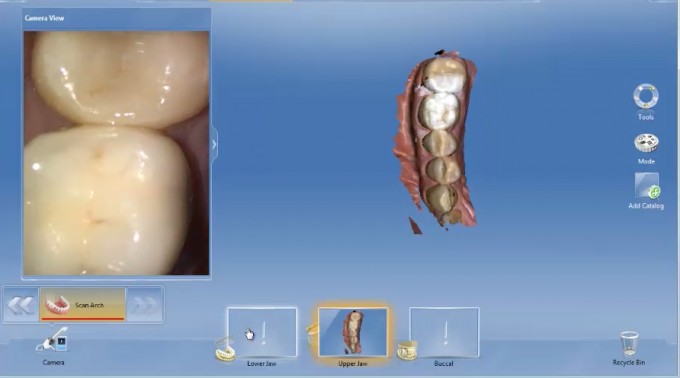One of the nice features of the Omnicam is the Cut Tool. It is important to use when we inadvertently image the cheek, tongue, finger or other objects besides what we are looking to image....the teeth. Things don't tend to get in the way when we are imaging from the occlusal. It is when we make the roll to the buccal or lingual when all heck can break out. When I image, I tend to work in a loop. Posterior occlusal surface working my way toward the canine. I then roll to buccal at canine and image down the buccal surface to the most distal tooth. I will roll over the occlusal table and move to the lingual of that tooth. I then move down the lingual wall to the canine area. I roll back up to the occlusal surface and then work my way back till I'm looking down the long axis of the posterior molar. That is my loop. Although I like having the Cut Tool, I try my best not to have to use it. If I can avoid the need to use it, it means I did a heck of a job imaging. The key to minimizing the need for the cut tool is how you use the camera on the buccal and lingual. If you wave the camera too high above the buccal cusp tips when imaging the buccal surface what do you think is going to get in the way of that camera? You got it, the tongue. Now you are forced to use the cut tool to remove that tone from the virtual impression and you have to re image that area. Similar thing happens when you roll to the lingual. If you bring the camera high above the lingual cusp tips, what are you likely going to image besides the teeth? Correct, the cheek. Try this. When you roll to the camera to the buccal and you move up up towards the cusp tip, don't bring the camera above the cusp tip. Try not to be able to see more than the buccal cusp tip and maybe the occlusal table. Not bringing the camera too high will avoid capturing the tongue.
Do the same thing when you roll that camera to the lingual. When you move along the lingual surface, try not to bring the camera over the lingual cusp tips where you can accidentally image the cheek by bringing the camera too high.
If you are missing a few areas of data near the cusp tips, pick it up when you move the camera back to the occlusal. You can slightly roll the camera to the buccal or lingual to pick up the missing areas. Since the camera is pointed in a more downward direction, you are much less likely to image the tongue or cheek. I finish the imaging right back where I started.
I make sure that I try to place an Optragate from Ivoclar in the keep the cheek and lips out of the way. I make sure that my assistant retracts the tongue. The wider the retractor the better. If you do this properly, you'll notice how few times you'll be cutting and reimaging which means faster completion of the appointment.

 Rich Rosenblatt
Rich Rosenblatt 


